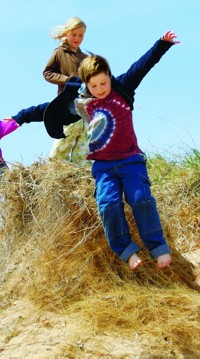Advertisement
Grab your lab coat. Let's get started
Welcome!
Welcome!
Create an account below to get 6 C&EN articles per month, receive newsletters and more - all free.
It seems this is your first time logging in online. Please enter the following information to continue.
As an ACS member you automatically get access to this site. All we need is few more details to create your reading experience.
Not you? Sign in with a different account.
Not you? Sign in with a different account.
ERROR 1
ERROR 1
ERROR 2
ERROR 2
ERROR 2
ERROR 2
ERROR 2
Password and Confirm password must match.
If you have an ACS member number, please enter it here so we can link this account to your membership. (optional)
ERROR 2
ACS values your privacy. By submitting your information, you are gaining access to C&EN and subscribing to our weekly newsletter. We use the information you provide to make your reading experience better, and we will never sell your data to third party members.
Policy
The Unloved Naturalist
Louis Agassiz was a towering figure in the history of American science, but a terribly flawed human being
by Audra J. Wolfe
May 20, 2013
| A version of this story appeared in
Volume 91, Issue 20

Pity the biographer of the loathsome subject. The 19th-century Swiss-American naturalist Louis Agassiz was an incorrigible racist, an unrepentant self-promoter, and a terrible mentor who withheld his assistants’ salaries and confiscated their laboratory keys when they dared ask for payment. Christoph Irmscher, Agassiz’s first biographer in more than 50 years, not only acknowledges these faults but also manages to uncover yet more reasons for the contemporary reader to abhor him. Despite this, the book ends by proposing that 21st-century science communicators look to Agassiz as a role model. “Louis Agassiz: Creator of American Science” is an ambivalent book about a complicated man who played a central role in American science—though not necessarily in the ways suggested in this biography.
Agassiz was born in Môtier, Switzerland, in 1807, the son of a Calvinist minister and a physician’s daughter. Over his father’s objections, Agassiz studied natural history as well as medicine at the University of Munich. By the time he received twin doctorates in natural philosophy and medicine, he had already published the first half of a major volume on Brazilian fish. After a brief and unsatisfying stint back in the vicarage, the young naturalist moved to Paris, where he found new father figures in the naturalists Georges Cuvier and Alexander von Humboldt. Cuvier tragically died of cholera only a few months after Agassiz’s arrival, but von Humboldt continued to sustain Agassiz, both intellectually and financially, for several years.
Agassiz looked to both von Humboldt’s fame and his extensive fieldwork in the New World as models for his own career. Back in Switzerland, Agassiz married, published a book on fossil fish, and sought an outlet for his ambition. Soon he had turned a passion for mountaineering into a career as the world’s most famous glaciologist. Never one to shy from adventure, Agassiz led weekend outings to the peaks of mountains previously thought unscalable and once had himself lowered 125 feet deep into a glacial crevasse. Clearly influenced by his teacher, the fossil expert Cuvier, Agassiz saw the odd rocks scattered across the Alpine landscape as clues to Earth’s own deep past. Agassiz’s theory of the Ice Age, published as “Études sur les glaciers” (“Studies on Glaciers,” 1840), explained that these foreign rocks—Earth fossils, of a kind—had been pushed to their new locations by the imperceptible movement of glaciers.
From Irmscher’s discussion, a reader unfamiliar with Agassiz’s work might think that the scientist’s fame depended on the movement of the glaciers. It is true that, of all of Agassiz’s scientific work, this finding has best withstood the test of time. For 19th-century observers, however, the real drama of Agassiz’s theory was the claim that fossils from extinct species could be explained by multiple catastrophic ice ages. This theory, and its accompanying claim that God had re-created species as many times and in as many locations as necessary, signaled an important turn in the ongoing debate about natural theology.
In the 1840s, when it was first introduced, Agassiz’s theory provided a palatable and necessary means to reconcile the existence of fossils with God’s plan for life on Earth. By the time of the publication of Charles Darwin’s “On the Origin of Species” in 1859, however, Agassiz himself had become somewhat of a fossil, offering ever more baroque explanations of creation, extinction, and their relationship to biblical accounts.

Irmscher unfortunately provides little of this background—and without it, Agassiz’s subsequent career makes little sense. In 1846, Agassiz arrived in Boston for what was supposed to be a two-year lecture tour. Instead, he stayed permanently, becoming the inaugural professor at Harvard University’s new Lawrence Scientific School. At Harvard, Agassiz agitated for funds for a museum where he could display all of God’s creation—or at least as much as could fit—under one roof. As Irmscher describes Agassiz’s grandiose vision, “He wanted his museum to be an ever-expanding library of all the volumes of natural history ever written, while at the same time he also wanted it to be really only one Book … a cosmos in miniature.” Agassiz became Boston’s most famous hoarder, haunting the fish stalls in search of interesting specimens while barrels, casks, jars, and bones filled every possible corner of the new museum’s space on Oxford Street.
Comfortably ensconced at Harvard, Agassiz increasingly left his beloved fieldwork to others. The death of Agassiz’s first wife in 1848 (Cecilie had left him three years earlier in Switzerland, tired of playing second fiddle to his scientific obsessions) left him free to marry Elizabeth Cabot Cary in 1850, a move that gave him entrée into Boston society and a seaside summer cottage on Nahant. After the early 1850s, Agassiz’s collecting trips increasingly consisted of trips to the nearby seashore. Irmscher’s account of Agassiz’s fine work on Massachusetts Bay jellyfish is a highlight of the book—the author clearly shares his subject’s fascination with the fragile and mysterious creatures.
This was, unfortunately, also the period that Agassiz’s scientific work took the wrong turn that shaped his future legacy. Agassiz claimed never to have seen a black person until his arrival in the U.S.; his first encounter, with a servant in Philadelphia, filled him with revulsion. Starting with a letter to his mother, Agassiz’s “scientific” racism began to take an increasingly central role in his lectures and publications. In the author’s words, “Agassiz couldn’t stop thinking about race.” The famed professor schooled his audiences, both northern and southern, on the differences between the races, eventually arguing for separate creations (polygenism). Genesis, Agassiz claimed, referred to only the creation of white folk. To his southern audiences, Agassiz made more explicit claims: Whites and blacks were different species.
Irmscher willingly discloses Agassiz’s personal racism, quoting disturbing passages from the scientist’s private correspondence at great length. He is oddly reticent, however, on the political implications and scientific reception of Agassiz’s theories. Agassiz’s embrace of polygenism coincided with his increasingly vocal opposition to Darwinian evolution; he championed both views in abolitionist, Unionist Boston.
Agassiz himself opposed slavery, but primarily because he wanted to avoid the “unnatural” intermingling of the races. In this context, the author’s omission of any meaningful reference to the Civil War is bizarre. Agassiz regularly dined with Charles Sumner, the Massachusetts senator who was beaten within an inch of his life on the floor of the U.S. Senate by a South Carolinian congressman in 1856; Agassiz’s son-in-law, Quincy Adams Shaw, was the uncle of Robert Gould Shaw, who died at Fort Wagner leading the famous all-black 54th Massachusetts Regiment. A chapter on Agassiz’s fraught relationship with his graduate students mentions a “mass exodus” of assistants from his laboratory in 1863—not coincidentally, the same year that the U.S. ordered its first military draft.
This missing political context matters because Irmscher repeatedly juxtaposes Agassiz’s most offensive comments from the 1860s with others’ antebellum views without acknowledging the searing impact of the war on racial attitudes. Irmscher assures us, for example, that Agassiz’s views on racial mixing were no worse than Abraham Lincoln’s in the 1850s: “When it came to racial coexistence [Lincoln’s] publicly articulated views differed not at all from those of the more readily vilified Agassiz or the more generally admired [Samuel Gridley] Howe.” Of course, Lincoln’s views changed over time; Agassiz’s did not. It’s a crucial detail, and Irmscher leaves it out.
“Louis Agassiz: Creator of American Science” is marred by several similar instances of moral equivalency. Yes, the author tells us, Agassiz’s opposition to Darwin may have been based on his ideological commitments rather than scientific fact, but Darwin poked fun at Agassiz in his correspondence with Agassiz’s colleague Asa Gray. The lesson? “If the sometimes shrill, sometimes hilarious exchanges between Darwin and Gray have shown one thing, it’s that the division between the good guys, concerned only with the truth, and the scientific bogeymen, concerned only with their reputation, is difficult to uphold.” Darwin and Gray’s correspondence offers many lessons, but a reassessment of Agassiz’s character is not one of them.
By the time of Agassiz’s death from a stroke in 1873, his opposition to Darwinian evolution had largely sidelined him from the mainstream of biology. Agassiz’s museum, never finished, transferred into the hands of his son, Alexander, who confronted the gargantuan task of organizing the specimens. Instead of Agassiz’s dream of a “synoptic hall” that would reveal God’s plan at a glance, Alex’ vision for what is now the Museum of Comparative Zoology arranged carefully chosen specimens—“luminous details”—to reveal a view of nature, and species, in constant flux.
And yet, even as Agassiz’s own scientific legacy was undermined by his son’s opposing worldview, the elder scientist’s death made front-page news. Agassiz remained, Irmscher tells us, “a favorite with the farmers … fishermen …. and children. … His scientific detractors notwithstanding, Agassiz had gained the hearts of all Americans.” Agassiz had especially won the hearts of scientific racists, who continued to use the scientist’s ideas to justify segregation and antimiscegenation laws for nearly a hundred years. Irmscher skips that part, too.
Historians of chemistry are, of course, all too familiar with the problem of complicated legacies. Fritz Haber developed both mustard gas and synthetic fertilizer; I. G. Farben gave the world new hues and committed wartime atrocities. A realistic view of the history of science recognizes that scientists—like all other humans ever to walk Earth—are complicated figures. Why, then, does Irmscher ask in his introduction, “But can we love Agassiz?” In a word: no. A more important question might be to ask why this author, who has written so eloquently on 19th-century nature writing in his works on Henry Wadsworth Longfellow, John James Audubon, and John Bartram, has invested so much time and intellectual effort trying to convince us that Agassiz may be worthy of rehabilitation.
Audra J. Wolfe is a writer and editor based in Philadelphia. She is the author of “Competing with the Soviets: Science, Technology, and the State in Cold War America.”




Join the conversation
Contact the reporter
Submit a Letter to the Editor for publication
Engage with us on Twitter